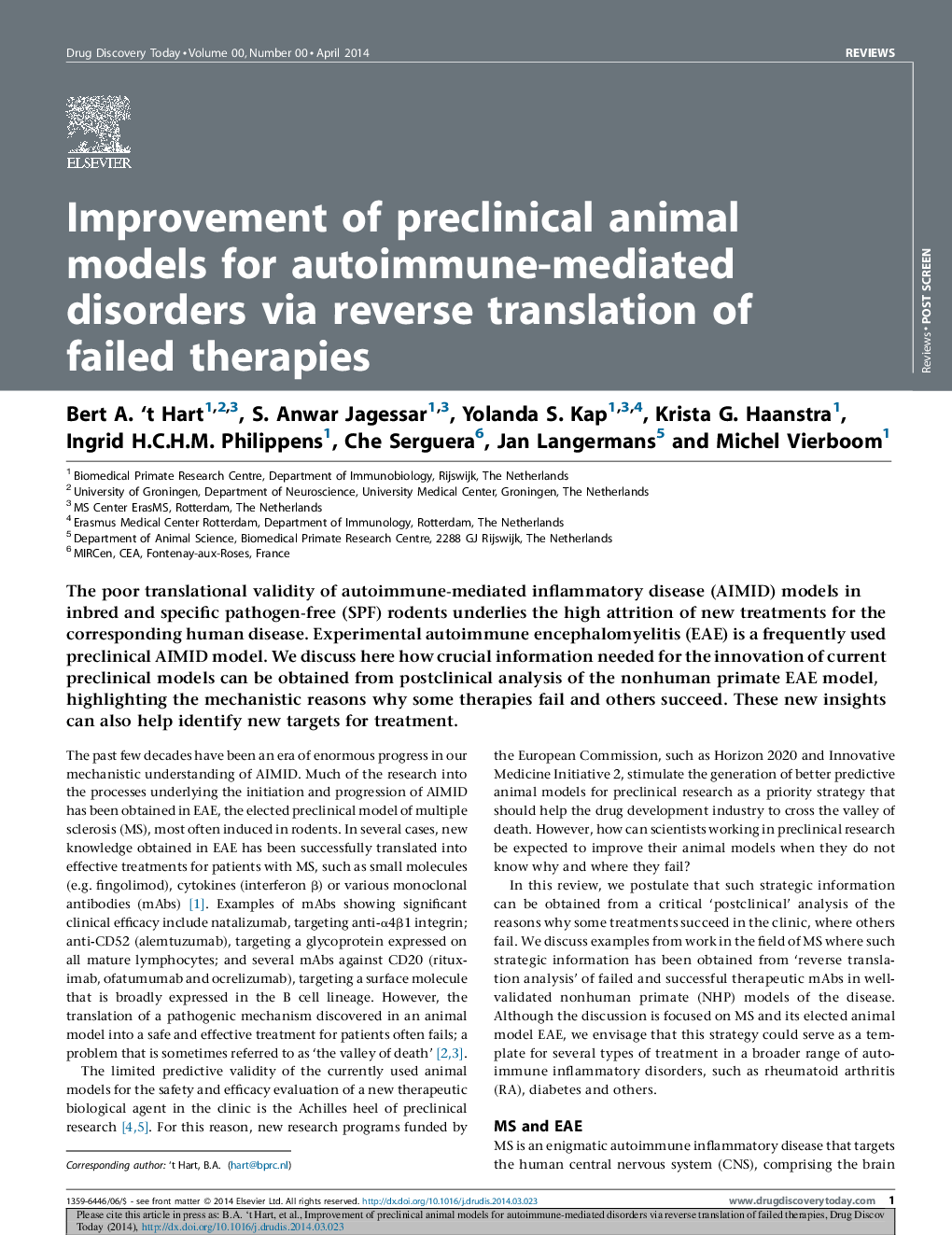| Article ID | Journal | Published Year | Pages | File Type |
|---|---|---|---|---|
| 10886124 | Drug Discovery Today | 2014 | 8 Pages |
Abstract
The poor translational validity of autoimmune-mediated inflammatory disease (AIMID) models in inbred and specific pathogen-free (SPF) rodents underlies the high attrition of new treatments for the corresponding human disease. Experimental autoimmune encephalomyelitis (EAE) is a frequently used preclinical AIMID model. We discuss here how crucial information needed for the innovation of current preclinical models can be obtained from postclinical analysis of the nonhuman primate EAE model, highlighting the mechanistic reasons why some therapies fail and others succeed. These new insights can also help identify new targets for treatment.
Related Topics
Life Sciences
Biochemistry, Genetics and Molecular Biology
Biotechnology
Authors
Bert A. 't Hart, S. Anwar Jagessar, Yolanda S. Kap, Krista G. Haanstra, Ingrid H.C.H.M. Philippens, Che Serguera, Jan Langermans, Michel Vierboom,
